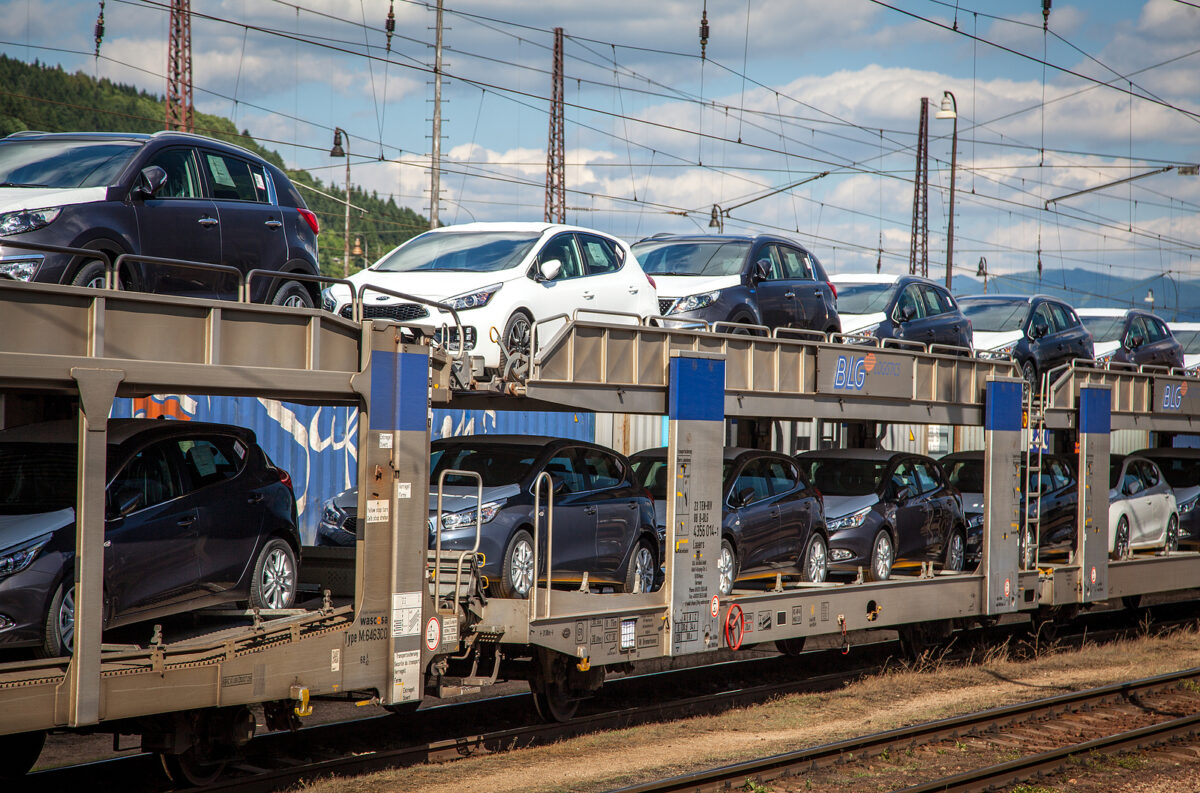Slovakia’s recent economic past is relatively clear cut. Since joining the European Union in 2004 and adopting the euro in 2009 the country has solidified its place as a robust player across many key sectors in Central and Eastern Europe, marked by—a difficult Covid-19 pandemic excepted—consistent growth.
Officially a high-income country according to the World Bank, Slovakia is one of the few countries that has managed to overcome the so-called ‘middle-income trap’ in recent decades and is, furthermore, one of the very few that has managed this transition well.
But what drives Slovakia’s economy today, and where is it headed in the near future?
Slovakia’s economy is powered primarily by its industrial sector, with manufacturing accounting for roughly a quarter of its GDP.
The country’s strategic location, skilled workforce, and membership in the EU have made it an attractive destination for foreign direct investment (FDI), particularly in the automotive industry. According to the Bertelsmann Transformation Index, the country’s most important EU trading partners are Germany (22 per cent), followed by Czechia (11 per cent), Poland, France and Hungary. Outside of the European Union, the United States remains Slovakia’s largest trading partner.
A manufacturing powerhouse
Slovakia’s car production per capita is the highest in the world. Major car manufacturers such as Volkswagen, Kia, PSA Peugeot Citroën, and Jaguar Land Rover have established substantial operations in the country, making it a central hub in the European automotive supply chain.
As of 2023, the automotive industry alone contributed to approximately 13 per cent of Slovakia’s GDP and employed around 275,000 people directly and indirectly.
However, this heavy reliance on a single industry presents vulnerabilities, especially in the face of global disruptions such as the semiconductor shortage and shifts toward electric vehicles (EVs).
Slovakia’s future economic stability may hinge on how well it can adapt its manufacturing base to these emerging trends. The government’s ongoing efforts to attract investment in EV production and battery manufacturing could be critical in maintaining the country’s industrial edge.
Beyond manufacturing, Slovakia’s economy is supported by several other sectors. Energy, particularly electricity production, plays a significant role. Slovakia generates over 80 per cent of its electricity from nuclear and renewable sources, positioning it as one of the greener countries in the EU in terms of energy mix.
The Mochovce and Bohunice nuclear power plants are central to this strategy, with ongoing investments aimed at increasing capacity and safety.
The IT sector is another growing part of the economy, benefiting from a well-educated workforce and a strong emphasis on technical education. Slovakia has become a regional hub for software development, IT services, and cybersecurity, with a rapidly expanding start-up ecosystem in cities like Bratislava and Košice.
The government has been actively promoting digitalisation and innovation, recognising the sector’s potential to drive future growth.
Tourism, while smaller in comparison to manufacturing, also remains a vital part of Slovakia’s economy. The country’s natural beauty, with its mountains, castles, and historic towns, attracts millions of visitors each year.
The High Tatras, a mountain range in northern Slovakia, is a particularly popular destination for outdoor enthusiasts. However, the tourism sector faced significant challenges during the Covid-19 pandemic, with visitor numbers dropping dramatically. More than 6.27 million tourists visited the country in 2019—the figure for 2023 was 5.55 million, well below pre-Covid levels.
A shot in the arm
Slovak politics was rocked earlier this year when an assassin attempted to kill the country’s prime minister, Robert Fico. Badly wounded, Fico survived and has since resumed full-time duties.
Long considered a nationalist, Fico’s economic policy has hitherto remained pro-business, continuing the successful policies of previous governments in prioritising low taxes, investment incentives, and labour market flexibility to attract foreign investors.
However, there is a growing tension between the need for fiscal responsibility and the demand for increased social spending, particularly in response to rising inequality and the cost-of-living crisis.
Corruption remains a significant issue, with several high-profile cases in recent years exposing deep-rooted problems in public procurement and political patronage. While the previous government took some steps to address these issues, including judicial reforms and the establishment of anti-corruption bodies, the public’s trust in institutions remains relatively low, and the fight against corruption is not a priority for Fico’s government.
Challenges
Slovakia faces several economic challenges in the short to medium term. One of the most pressing is demographic change. Slovakia’s population is aging rapidly, with a declining birth rate and increasing life expectancy. This demographic shift is expected to put significant pressure on the country’s pension and healthcare systems, and may also lead to labor shortages in key sectors.
The government has been slow to address these challenges, with much-needed reforms to the pension system and labor market still in the early stages.
Another critical issue is the regional disparity within the country. While Bratislava and the western part of Slovakia have benefited greatly from economic growth, other regions, particularly in the east, have lagged behind.
High unemployment rates, lower levels of education, and inadequate infrastructure in these areas continue to hinder their development. Addressing these disparities will be crucial for Slovakia’s long-term economic sustainability.
On the positive side, Slovakia’s membership in the EU provides it with access to significant funding through the EU’s recovery plan and structural funds. These resources offer a unique opportunity for Slovakia to invest in critical infrastructure, green energy projects, and digital transformation.
If absorbed and managed effectively, these investments could help mitigate some of the country’s economic vulnerabilities and create new avenues for growth.
In search of the right mix
The outlook for Slovakia’s economy is one of cautious optimism. The country’s strong industrial base, particularly in manufacturing, provides a solid foundation for growth.
However, the need to diversify the economy is becoming increasingly urgent, especially given the global shift towards sustainable and digital technologies. The government’s ability to implement necessary reforms, attract investment in new sectors, and address social and regional inequalities will be key determinants of Slovakia’s economic trajectory in the coming years.
The political environment remains a potential wildcard. Stability and effective governance will be crucial in navigating the economic challenges ahead. While Slovakia has shown resilience in the face of past crises, including the global financial crisis and the pandemic, the road ahead will require careful management of both internal and external pressures.
Real GDP grew by 1.6 per cent in 2023, primarily reflecting a decline in private and public consumption. The weaker economic performance of the country’s major trade partners resulted in a decline of exports and some deterioration in Slovakia’s market share.
A simultaneous large fall in imports resulted in an overall positive contribution from net exports, but this was more than offset by the negative contribution of the strong drawdown in inventories.
Looking forward, economic activity is expected to accelerate in 2024 as private and public consumption resume growth and exports rebound strongly due to firming external demand.
Government support measures are expected to continue limiting the impact of high energy prices for households and businesses in 2024. Furthermore, the projected real wage increases should provide an extra stimulus for private consumption.
However, investment growth is set be limited in 2024, following a notable jump by 10.6 per cent in 2023 as Slovakia intensified its use of EU funds by the end of the year.
In 2025 investment is expected to pick up pace to a great extent driven by absorption of EU structural funds and the RRF. Overall, real GDP growth is projected at 2.2 per cent in 2024 and 2.9 per cent in 2025, according to the EU’s latest forecast for the country, published in May.
With the right mix of policy, innovation, and investment, Slovakia has the potential to not just maintain its current status but to rise as a leading economy in Central Europe. However, missteps could see it falter in the face of mounting global and domestic challenges. As always, the balance between opportunity and risk will define Slovakia’s economic story.







